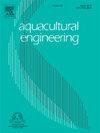Big multi-step motion and mooring load forecasting of fish cage using a novel hybrid model based on Bi-SLSTM neural network
IF 4.3
2区 农林科学
Q2 AGRICULTURAL ENGINEERING
引用次数: 0
Abstract
Accurate forecasting of motion and mooring loads in fish cages is vital for efficient field monitoring and numerical simulations. This research introduces an innovative hybrid model that leverages Bidirectional Stateful Long Short-Term Memory (Bi-SLSTM) neural networks to predict the dynamic behavior of fish cages. By incorporating bidirectional data flow and state-preserving mechanisms, the model enhances the accuracy of multi-step predictions. Performance is assessed through the Root Mean Square Error (RMSE) and the Trapezoidal-based Integral Similarity Index (Rtrapz). Results show that Bi-SLSTM outperforms Long Short-Term Memory (LSTM), Gated Recurrent Unit (GRU), and Bidirectional Long Short-Term Memory (BiLSTM) models, achieving Rtrapz values above 0.85 in large multi-step predictions. Further analysis reveals that combining wave and motion data as inputs improves prediction accuracy, with surge and heave predictions reaching 91 % and 98 %, respectively. The hybrid strategy combining motion response and load data provides the best performance for mooring load prediction, with Rtrapz values exceeding 0.85 across different output steps. The Bi-SLSTM model demonstrates strong prediction capability and robustness in forecasting cage dynamics.
基于Bi-SLSTM神经网络的新型混合模型的鱼笼大多步运动和系泊载荷预测
准确预测鱼笼的运动和系泊载荷对于有效的现场监测和数值模拟至关重要。本研究提出了一种创新的混合模型,利用双向状态长短期记忆(Bi-SLSTM)神经网络来预测鱼笼的动态行为。该模型通过引入双向数据流和状态保持机制,提高了多步预测的准确性。性能通过均方根误差(RMSE)和基于梯形的积分相似指数(Rtrapz)进行评估。结果表明,Bi-SLSTM优于长短期记忆(LSTM)、门控循环单元(GRU)和双向长短期记忆(BiLSTM)模型,在大型多步预测中Rtrapz值超过0.85。进一步分析表明,结合波浪和运动数据作为输入提高了预测精度,对浪涌和隆起的预测分别达到91% %和98% %。结合运动响应和载荷数据的混合策略为系泊载荷预测提供了最佳性能,在不同的输出步长中Rtrapz值超过0.85。Bi-SLSTM模型具有较强的预测能力和鲁棒性。
本文章由计算机程序翻译,如有差异,请以英文原文为准。
求助全文
约1分钟内获得全文
求助全文
来源期刊

Aquacultural Engineering
农林科学-农业工程
CiteScore
8.60
自引率
10.00%
发文量
63
审稿时长
>24 weeks
期刊介绍:
Aquacultural Engineering is concerned with the design and development of effective aquacultural systems for marine and freshwater facilities. The journal aims to apply the knowledge gained from basic research which potentially can be translated into commercial operations.
Problems of scale-up and application of research data involve many parameters, both physical and biological, making it difficult to anticipate the interaction between the unit processes and the cultured animals. Aquacultural Engineering aims to develop this bioengineering interface for aquaculture and welcomes contributions in the following areas:
– Engineering and design of aquaculture facilities
– Engineering-based research studies
– Construction experience and techniques
– In-service experience, commissioning, operation
– Materials selection and their uses
– Quantification of biological data and constraints
 求助内容:
求助内容: 应助结果提醒方式:
应助结果提醒方式:


